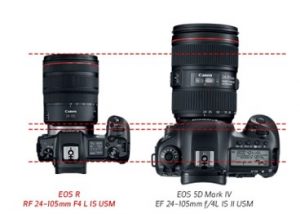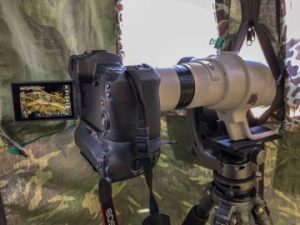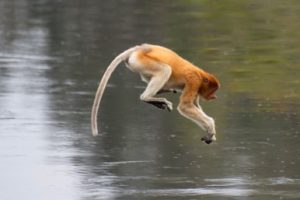When you purchase through links on our site, we may earn an affiliate commission. Here’s how it works.
How to adjust Canon EOS R wildlife photography settings
The Canon EOS R, Canon’s first full-frame mirrorless camera, is exceptionally suited for wildlife photography, featuring a 30.3 megapixel full-frame CMOS sensor combined with the powerful DIGIC 8 image processor. It boasts a versatile ISO range of 100-40,000, expandable up to 102,400.
One of the EOS R’s standout features is its silent shutter mode, perfect for capturing wildlife without disturbing the subjects. The camera also includes built-in Wi-Fi, allowing for remote control through the Canon Camera Connect app and live view shooting directly from your smartphone or tablet.
Canon EOS R wildlife photography settings
Tips for wildlife photography with Canon EOS R
Step 1. Smaller body size for easy handling

Canon EOS R wildlife photography settings
The compact design of the EOS R offers significant advantages for wildlife photographers, enabling quick access to controls and enhanced portability compared to heavier DSLRs like the Canon EOS 5D Mark IV.
Step 2. The EVF (Electronic viewfinder) for changing settings

Canon EOS R wildlife photography EVF settings
The electronic viewfinder (EVF) is invaluable for wildlife photography, allowing real-time exposure adjustments and scene composition without taking your eye off the subject.
Step 3. Articulated LCD screen for a long wait

Canon EOS R wildlife photography articulated LCD for long wait
The articulated LCD screen is perfect for extended wildlife observation sessions, allowing for comfortable viewing angles without maintaining a constant eye-level position.
Step 4. Randomly capture images with autofocus

Canon EOS R wildlife photography autofocus
The EOS R’s rapid autofocus system, with a focusing speed of 0.05 seconds and the ability to shoot up to 8 fps in burst mode, is ideal for capturing dynamic wildlife action. For optimal results, use One-shot AF when shooting in burst mode.
Step 5. Focus on the eyes for the exact expression

Canon EOS R wildlife photography expression
Focusing on the eyes is crucial for capturing the essence of the wildlife subject. The EOS R’s extensive AF coverage with 5,655 selectable AF points allows for precise focus anywhere in the frame.
Step 6. Closer shots with a 30.3-megapixel full-frame image sensor

Canon EOS R wildlife photography expression
The high-resolution 30.3-megapixel full-frame sensor enables significant cropping without compromising image quality, offering flexibility in post-production. Compatibility with EF and EF-S lenses via an adapter extends the camera’s versatility.
In video mode, the EOS R supports 4K recording at 30 fps, Full HD at 60 fps, and HD at 120 fps, along with 10-bit 4:2:2 HDMI output for high-quality footage.